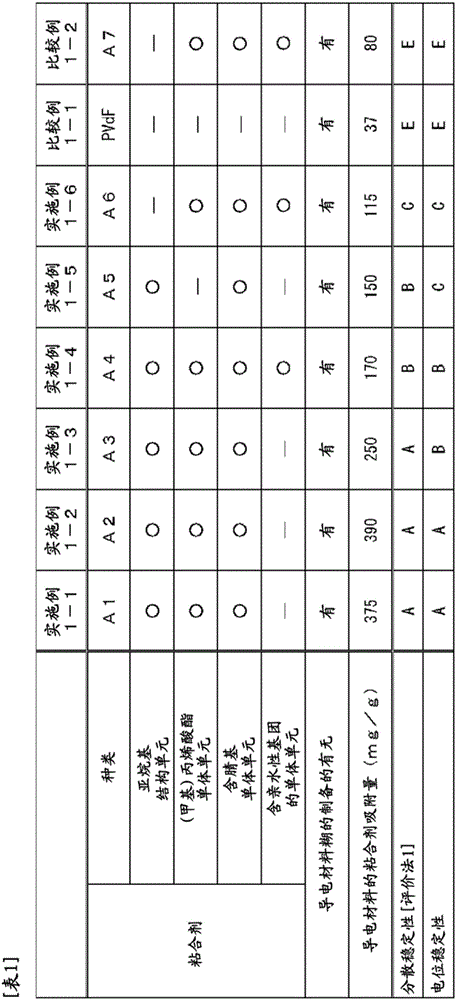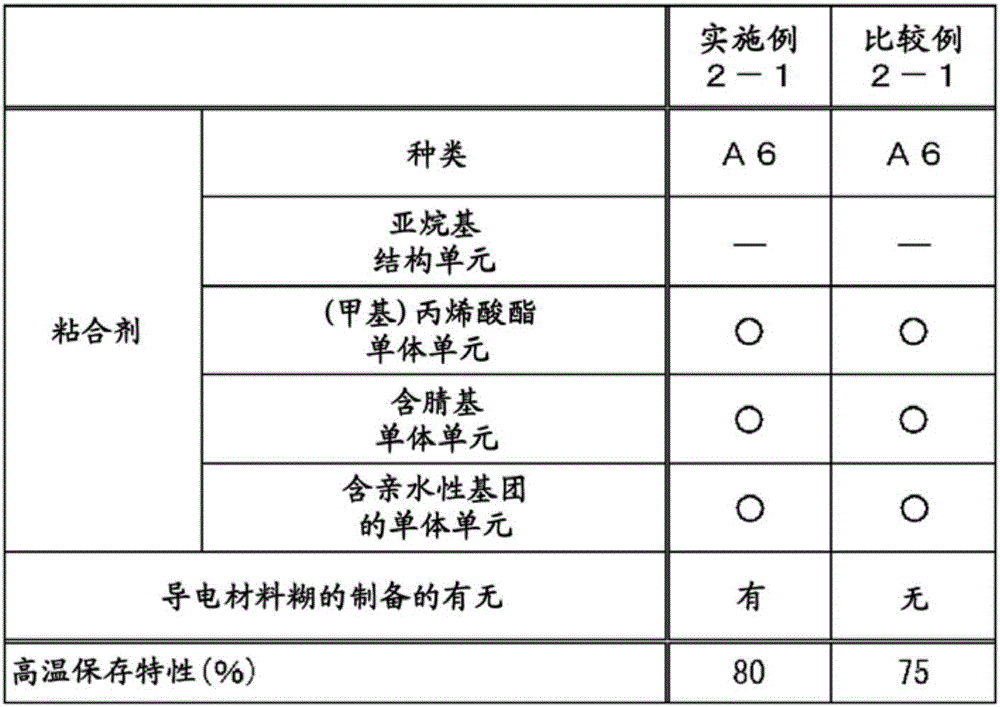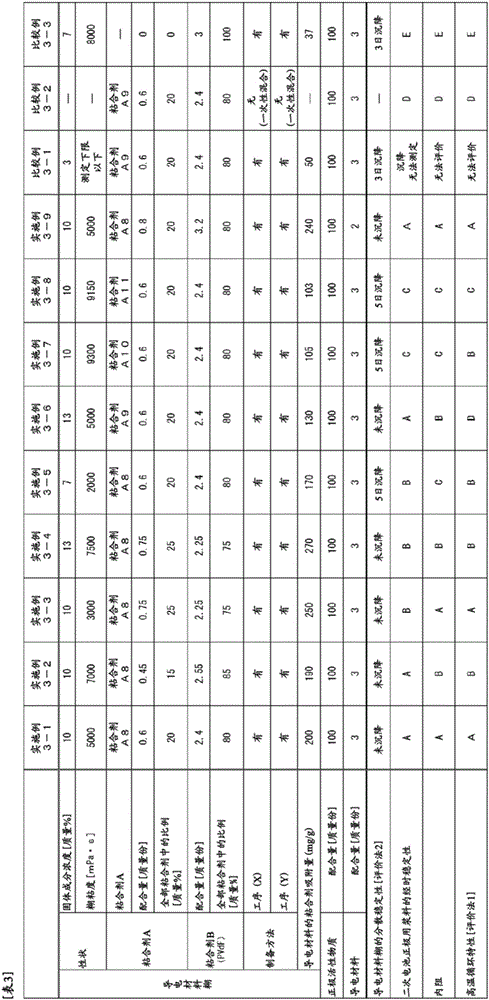Conductive material paste for secondary battery electrode, method for producing slurry for secondary battery cathode, method for producing secondary battery cathode, and secondary battery
A secondary battery and conductive material technology, applied in secondary batteries, battery electrodes, non-aqueous electrolyte battery electrodes, etc., can solve the problems of the influence of the electrical characteristics of the secondary battery, the influence of the slurry properties of the electrodes, etc., and achieve excellent electrical characteristics , excellent dispersion stability, and improved electrical properties
- Summary
- Abstract
- Description
- Claims
- Application Information
AI Technical Summary
Problems solved by technology
Method used
Image
Examples
preparation example Construction
[0116] [Preparation method of adhesive A]
[0117] The method for producing the binder A is not particularly limited, and can be produced, for example, by polymerizing a monomer composition containing the above monomers to obtain a polymer, and optionally hydrogenating the obtained polymer.
[0118] Here, in this specification, the content ratio of each monomer in the monomer composition can be determined based on the content ratio of each monomer unit and structural unit (repeating unit) in the adhesive A.
[0119] The polymerization method is not particularly limited, and any method of solution polymerization, suspension polymerization, bulk polymerization, emulsion polymerization, etc. can be used. In each polymerization method, known emulsifiers and polymerization initiators can be used as necessary.
[0120] The hydrogenation method is not particularly limited, and a conventional method using a catalyst can be used (for example, refer to International Publication No. 201...
Embodiment 1-1
[0331]
[0332] In an autoclave with a stirrer, 240 parts of ion-exchanged water, 2.5 parts of sodium alkylbenzene sulfonate as an emulsifier, 35 parts of n-butyl acrylate (BA) as a (meth)acrylate monomer, and After 20 parts of acrylonitrile (AN) as a nitrile group-containing monomer, the inside of the bottle was replaced with nitrogen, and then 45 parts of 1,3-butadiene (BD) as a conjugated diene monomer (above from BA, AN and BD constitute a monomer composition), 0.25 part of ammonium persulfate as a polymerization initiator was added, and the polymerization reaction was carried out at a reaction temperature of 40° C. to obtain a conjugated diene monomer unit, a (meth)acrylate monomer unit, and a Monomer units and polymers containing nitrile group monomer units. The polymerization conversion rate was 85%.
[0333] A solution of 400 ml (total solid content 48 g) in which ion-exchanged water was added to the obtained polymer to adjust the total solid content concentration t...
Embodiment 1-2
[0339] In producing the adhesive, adhesive A2 was produced in the same manner as in Example 1-1, except that BD49 parts, BA27 parts, and AN24 parts were used as monomer compositions. Furthermore, except having used binder A2 instead of binder A1, it carried out similarly to Example 1-1, and produced the electrically conductive material paste of 10% of solid content concentration. The binder adsorption amount of the conductive material of the obtained conductive material paste was 390 mg / g, and the viscosity was 4000 mPa·s. The dispersion stability [Evaluation Method 1] and potential stability of the obtained conductive material paste were evaluated. The results are shown in Table 1.
PUM
| Property | Measurement | Unit |
|---|---|---|
| adsorption capacity | aaaaa | aaaaa |
| viscosity | aaaaa | aaaaa |
| specific surface area | aaaaa | aaaaa |
Abstract
Description
Claims
Application Information
 Login to View More
Login to View More - R&D
- Intellectual Property
- Life Sciences
- Materials
- Tech Scout
- Unparalleled Data Quality
- Higher Quality Content
- 60% Fewer Hallucinations
Browse by: Latest US Patents, China's latest patents, Technical Efficacy Thesaurus, Application Domain, Technology Topic, Popular Technical Reports.
© 2025 PatSnap. All rights reserved.Legal|Privacy policy|Modern Slavery Act Transparency Statement|Sitemap|About US| Contact US: help@patsnap.com



